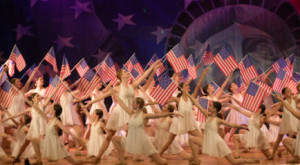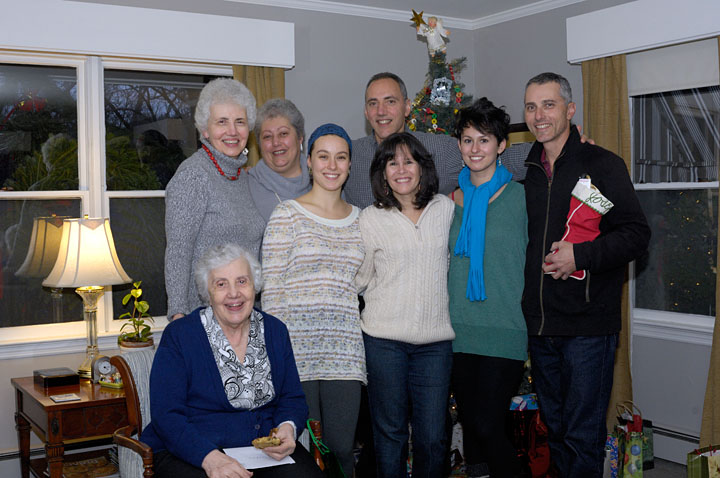Thanks to everyone who contributed to our list of greatest holiday photo challenges. Please feel free to post a comment if you have any thoughts or additional questions!
Happy Holidays!
General Lighting Suggestions
- Balance daylight, flash and Christmas lights
- Indoor Photography – Proper Flash Technique
For those of us looking to get a nice balanced exposure when using flash here’s a few things to try. If you camera has a flash compensation (not exposure compensation), try dialing back the power to – 0.7 or -0.5 to moderate the impact the intense flash will have in your image. Turn up your ISO to 400 or 800, this will brighten the backgrounds up and make your pictures look more natural. Not sure how to proceed, check your manual or stop by for a quick tutorial. To balance daylight, flash and Christmas lights in the same image can be a challenge that in some cases goes beyond what your camera may be capable in a single image. For those who are interested, High Dynamic Range (HDR) photography takes the best highlights, shadows and overall exposure for different image elements from two or more images. If you are using an external flash, you can buy various diffusers that help smooth and even out the light put out by the flash. Look on our calendar of events soon for our list of January free “Focus Sessions” that may include Flash Photography and Flash Diffusion. Focus Session take place on various Saturdays at 9:30 am in Westwood and 10:30 am in Englewood and last about 30 minutes.
For indoor shots be sure to remove your polarizer filter – just leave your protective UV on your lens – never stack filters.
Nighttime Photography of Holiday Lights

Photo: Gerri Facchine
To get nighttime photographs of Christmas lights here are some recommended items – warm gloves, hand warmers, hat, an extra battery in a warm pocket, tripod & camera shutter release. The self timer can be used to trigger the shutter in a pinch without shaking the camera. Just set it to two seconds, gently trigger the shutter and make sure you are clear of the camera when the shutter trips (this minimizes any potential shake). It’s also a good idea to bracket your exposures. This means take a variety of exposures so that you will be able to choose the best one. You can easily make these adjustments using the exposure compensation ( the +/- button) on your camera. Take the normal exposure (if too dark – try +1, +2 or +3) (if too light try -1, -2 or -3 ). With this approach you should be able to capture just the right exposure. If you are doing extended night photography on a really cold night, or you left your camera in a cold car for an extended period, the battery life will be shortened – that’s why you keep a backup in a warm pocket so that you can keep shooting.
Even a point and shoot camera can capture nighttime images (see Rockefeller Center above) just as long as the camera is steadied on a mini tripod or solid surface.
If you have a subject in the foreground, you can use your camera’s slow synch feature with the flash to illuminate the foreground and background. Don’t forget to put your flash back to the normal mode when you are done. Not sure how to set your camera – check your manual or stop by either Bergen County Camera location for a quick tutorial.
Getting Better People Shots
- Making sure everyone looks good
- Kids Opening Presents
- How to photograph children so they look natural – lots of pictures my kid turning or running away from the camera
- Catching good candid shots of people without food or drink in the way
One of the first suggestions you will hear our store manager Paul Carretta suggesting is be ready for the shot. This means your camera is on, your lens cap is off, and your camera is zoomed to the widest setting so you a ready to go at a seconds notice. How many times have you or have you seen someone pick up a camera to take a picture with a lens cap on or the camera turned off! If you have a red-eye reduction mode on your camera that produces a barrage of flash and lights, turn if off – especially with large groups. With red-eye flash modes, most people are uncertain which flash is the real flash and tend to be in many states of preparedness – this hurts your candid photography. A little preparation goes a long way to getting candid uncluttered images. When setting up, be aware of your background, watch for plants behind people heads, do some quick cleanup of anything that may clutter up your image.
Use your high speed setting to take a rapid sequence of images – just be sure to pick the best one. Choosing the best image can be a challenge, so if you are having a tough time, stop by the store we’ll be glad to help.
When it comes to opening presents, candid photography in this situation is usually the best mixed in with a few attempts to pose the shot. Often with kids the more you can blend in the smoother this whole process will go. Experiment with flash and existing light – no flash – high ISO which will help you blend in more to capture those candid moments. Always take a few test shots to make sure your settings work. Take lots of shots and review your results, get a critique and modify your technique as you learn what works and what doesn’t”
How to capture a performance – plays and ballet

An adjustable SLR camera with a fast lens, tripod or monopod, with a powerful add on flash is your best bet to capture performance photography. Always check the venue to be sure what type of photography and whether flash is allowed. A very important reminder is your built in flash on Point and Shoot and SLR cameras reach no further than 10 feet! If you attempt pictures further away, you capture a very dark image and the brightly illuminated seat back just in front of you. A hot shoe mounted flash can boost your flash range to over 50 feet.
With an add on flash or with built in flash closer than 12′
A monopod is great for taking the weight off and allowing your camera to be in a ready position. Shoot with your camera on program to start and make adjustments with your +/- (exposure compensation) depending on whether your pictures are looking too bright or too dark. If you are using your built in flash try raising your ISO – with a powerful shoe mounted flash try ISO 800 or higher.
Without flash
A monopod, fast (low f number lens) this is where a 50mm f1.4 lens can greatly enhance your existing light photography in combination with a higher ISO – ( 800, 1600 or 3200). Just be aware that the higher you raise your ISO the more noise (like film grain) your image will have. Raise the ISO only high enough to capture your subject. The example above was photographed with a 85mm lens at ISO 400 at 1/125th at f2.8. If you lens is a f5.6 you would need to set your ISO to 1600 to achieve the same f-stop and shutter speed. Another tip is to shoot at the peak of action (i.e. someone is neither going up or going down for a brief instant) or to wait for a lull in the action.


